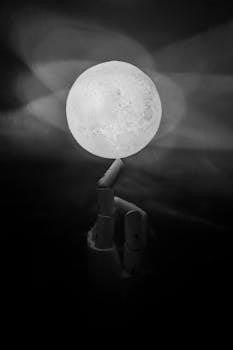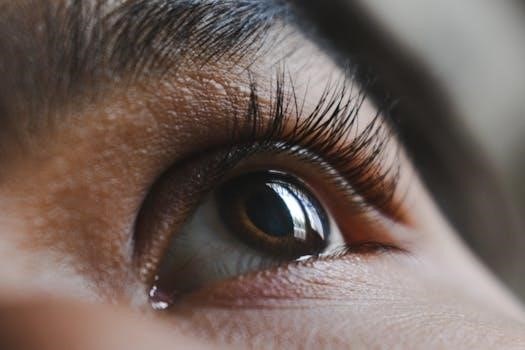Diffusion models represent a significant leap forward in generative modeling, demonstrating impressive capabilities, especially in image creation. These models operate through a forward and reverse process of gradually adding and then removing noise from data. They stand out as a new and exciting area within computer vision. They are now considered state-of-the-art for producing images.
Overview of Diffusion Models
Diffusion models are a class of generative models that have recently gained prominence due to their ability to produce high-quality and diverse samples. These models operate on the principle of gradually transforming data into noise and then reversing this process to generate new data. This approach has shown remarkable success in various applications, particularly in image generation and manipulation. They work by learning to reverse a gradual corruption process, effectively learning the data distribution by undoing the noise that was added to it. The underlying concept overcomes limitations observed in previous generative approaches. Diffusion models have shown impressive results in creating images, and their growth in recent years has empowered many exciting applications. Their ability to capture complex data distributions has made them a leading approach in generative tasks. They provide a powerful framework for generating realistic and diverse outputs. They offer a new and promising avenue for various applications in computer vision.
Significance in Imaging and Vision
Diffusion models have emerged as a powerful tool in the field of imaging and vision, offering solutions to various challenging problems. They enable innovative applications, such as image editing, image-to-image translation, super-resolution, and image segmentation, which have seen significant advancements due to these models. These models are appreciated for their strong mode coverage and the quality of generated samples, despite their computational demands. They have shown impressive results in many computer vision tasks. The ability of these models to generate high-quality images has led to their extensive use in areas like medical imaging, where they assist in image enhancement. Additionally, their application extends to 3D shape generation and completion, demonstrating their versatility. Their ability to understand and manipulate complex visual data positions them as a key area of research. They are increasingly being repurposed for diverse image processing and conditional image generation tasks.

Core Concepts and Mathematical Foundations
The foundation of diffusion models rests upon key mathematical concepts, including variational autoencoders. These models also utilize denoising diffusion probabilistic models and score matching Langevin dynamics. Understanding these core ideas is crucial for comprehending how diffusion models work.
Variational Autoencoders (VAEs) as Basis
Variational Autoencoders, or VAEs, play a foundational role in the understanding of diffusion models, serving as a crucial stepping stone; VAEs are generative models that learn a latent representation of data, which means that they encode the data into a lower-dimensional space. This encoded representation can then be used to generate new samples. The architecture of a VAE consists of an encoder and a decoder. The encoder maps the input data to a probability distribution in the latent space, while the decoder maps samples from the latent space back to the data space. VAEs were among the first generative methods to be widely adopted for tasks like image synthesis. Their ability to learn a meaningful latent space makes them a useful basis for understanding the more complex mechanisms of diffusion models. They provide a basic comprehension of how generative models can map data through probability distributions.
Denoising Diffusion Probabilistic Models (DDPMs)
Denoising Diffusion Probabilistic Models, or DDPMs, are a specific type of diffusion model that forms a core part of the technology. DDPMs operate on the principle of gradually adding noise to the input data through a forward diffusion process until the data transforms into pure noise. The model then learns to reverse this process by denoising the pure noise back to the original data. This learning is achieved by training a neural network to predict the noise that was added at each step of the forward diffusion. The model is trained to reverse the transformation by predicting the noise added at each step. DDPMs are widely appreciated for their strong mode coverage and the high quality of generated samples and have seen many successful applications, especially within image generation.
Score Matching Langevin Dynamics
Score matching Langevin dynamics is a crucial technique used in diffusion models. This method focuses on estimating the gradient of the data distribution’s log probability, known as the ‘score’. Score matching involves training a model to predict the score of noisy data. This predicted score is then used in the Langevin dynamics algorithm to sample from the data distribution. The process of Langevin dynamics employs the estimated score to iteratively refine a sample, gradually moving it towards areas of high probability. This method allows the model to reverse the diffusion process and generate new samples from the learned distribution. It plays a vital role in diffusion models and their ability to generate high-quality samples.

Diffusion Process
The core of diffusion models lies in their unique process, which is divided into two stages⁚ the forward diffusion stage and the reverse diffusion stage. These stages are fundamental to how diffusion models work to generate data.
Forward Diffusion Stage
The forward diffusion stage is a crucial part of the diffusion process, where the input data, such as an image, is gradually transformed into random noise. This is achieved by incrementally adding small amounts of Gaussian noise to the original data across a sequence of steps. The process is designed to be Markovian, meaning each step only depends on the previous one. As more noise is added, the original data loses its structure, eventually becoming indistinguishable from pure noise. The forward process is typically defined by a schedule that controls how much noise is added at each step. This stage essentially corrupts the input data, preparing it for the reverse diffusion process, which aims to reconstruct the original data from the noise. The forward diffusion stage is a key part of generating the data.
Reverse Diffusion Stage
The reverse diffusion stage is the core generative component of diffusion models, aiming to reconstruct the original data from the pure noise state achieved during the forward process. This stage involves iteratively denoising the data, gradually removing the added noise at each step. The denoising process is guided by a learned model that predicts the noise added in the forward process, allowing the model to step back towards the original data distribution. This iterative procedure starts with a sample of pure noise and progressively refines it until a sample resembling the original data emerges. This reverse process is crucial for generating new samples. It works by reversing the steps of the forward diffusion stage. The reverse process is where the actual generation of data happens.

Applications in Imaging and Vision
Diffusion models have found extensive applications in imaging and vision, including image editing, image translation, and super-resolution. They are also used for image segmentation and 3D shape generation, and have been applied to medical imaging.
Image Editing and Manipulation
Diffusion models offer powerful tools for image editing and manipulation, allowing for both subtle and significant alterations. These models can be used to seamlessly modify existing images by adding, removing, or changing elements within the image. This includes tasks such as inpainting, which fills in missing or damaged portions of an image, and style transfer, which applies the artistic style of one image to another. The ability to generate coherent and realistic results makes diffusion models highly effective for a range of editing tasks. Furthermore, these models enable interactive image manipulation, where users can guide the editing process using various control mechanisms. They allow for controllable, semantic, and text-driven image synthesis. The process is often more intuitive and less prone to artifacts compared to traditional methods. They provide a new level of flexibility and creativity for image editing.
Image-to-Image Translation
Diffusion models have proven to be highly effective in image-to-image translation tasks, where the goal is to transform an image from one domain to another. This includes converting images from one style to another, such as transforming a sketch into a realistic photo or an image from day to night. These models can learn complex mappings between different image domains without the need for paired training data in some cases. They are capable of handling complex transformations while maintaining the overall structure and content of the original image. The generative power of diffusion models allows for the creation of highly realistic and diverse translated images. This technology is significant in various applications. They facilitate semantic image transformations and are increasingly repurposed for conditional image generation tasks.
Super-resolution and Image Segmentation
Diffusion models demonstrate remarkable capabilities in both super-resolution and image segmentation tasks, addressing crucial challenges in image processing. For super-resolution, these models can effectively upscale low-resolution images to high-resolution versions, recovering fine details and textures by learning complex statistical relationships. In image segmentation, diffusion models aid in delineating different objects or regions within an image, contributing to accurate and robust results. These models leverage their generative power to create detailed segmentations and high-quality upscaled images. They are used for image segmentation in computer vision, where clear boundaries and fine-grained details are important. They are increasingly repurposed for various image processing tasks. The models have shown impressive results in image analysis.

Advanced Topics
The field of diffusion models is rapidly expanding, with new avenues being explored. These include text-to-image generation, where models create images from textual descriptions, and 3D shape generation and completion. These areas represent cutting-edge research.
Text-to-Image Generation
Text-to-image generation is a remarkable application of diffusion models, where these models are used to create images based on textual descriptions. Models like Google’s Imagen and Stable Diffusion are prominent examples of this technology. These models use transformer architectures or similar mechanisms to understand the text prompt and generate a corresponding image. The process involves interpreting the semantic meaning of the text and translating it into visual content. This field has seen astonishing growth, empowering applications in many areas. This technology allows users to create diverse and imaginative images simply by inputting text. It can generate high-quality and realistic images, demonstrating the impressive capabilities of diffusion models. The open-source nature of models like Stable Diffusion has further accelerated research and development in this field. The ability to generate images from text has opened up new possibilities in creative expression and design, making it an essential area of focus in diffusion model research.
3D Shape Generation and Completion
Diffusion models are also being applied to 3D shape generation and completion, extending their capabilities beyond 2D images. This involves creating or completing 3D models of objects using diffusion-based generative techniques. These models can generate new 3D shapes from scratch, or they can complete partially existing shapes. This is a significant step forward in computer graphics and 3D modeling. The process requires handling complex 3D data and generating coherent 3D structures. This technology is useful in various applications, including CAD design, virtual reality, and gaming. Diffusion models have shown promise in producing detailed and realistic 3D models. They also have the potential to fill in missing parts of 3D scans or designs. The use of diffusion models in 3D shape manipulation opens up new possibilities in digital art, engineering, and interactive experiences. Their ability to generate complex 3D geometries marks an important advance in generative modeling.

